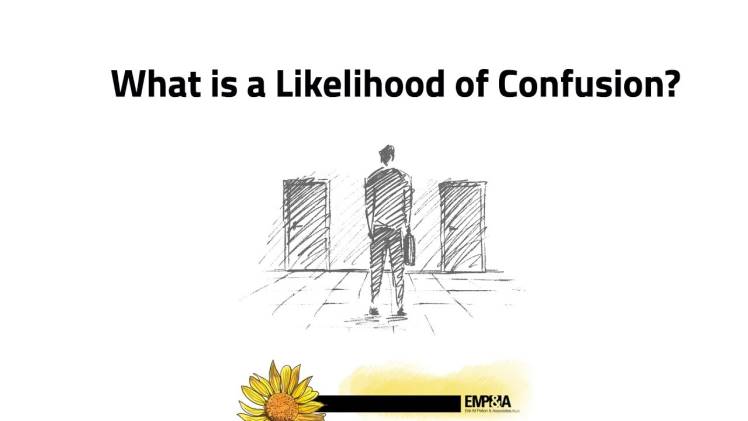What is the “Likelihood of Confusion” Test in Trademark Law?

Trademark law plays a crucial role in protecting the distinctive identity of brands and preventing consumer confusion in the marketplace. One of the key principles in trademark law is the “likelihood of confusion” test. This test serves as a critical factor in determining the registrability and infringement of trademarks. Understanding the concept of likelihood of confusion is essential for businesses, trademark applicants, and legal professionals. In this article, we will delve into the likelihood of confusion test in trademark law, exploring its significance, factors considered, and its implications for trademark protection.
Defining Likelihood of Confusion
In the context of trademark law, the likelihood of confusion refers to the possibility that consumers may be confused or deceived as to the source of goods or services due to similarities between trademarks. It is the standard by which courts and trademark authorities assess the potential for consumer confusion when evaluating the registrability of a trademark or determining trademark infringement cases.
Importance of the Likelihood of Confusion Test
The likelihood of confusion test is crucial because its primary objective is to protect consumers from confusion and deception in the marketplace. By preventing the registration or use of trademarks that are likely to cause confusion, trademark law aims to maintain the integrity of the market, ensure fair competition, and safeguard the reputation and distinctiveness of existing trademarks.
Factors Considered in the Likelihood of Confusion Test
When applying the likelihood of confusion test, several factors are considered to assess the similarities and potential for confusion between trademarks. The specific factors may vary slightly depending on the jurisdiction, but some common elements include:
- Similarity of Marks
The similarity between the marks is a significant factor in the likelihood of confusion analysis. Courts and trademark authorities examine the visual, phonetic, and conceptual similarities of the marks. The overall impression created by the marks is considered, taking into account the appearance, pronunciation, and meaning of the trademarks.
- Similarity of Goods or Services
The relatedness of the goods or services offered under the trademarks is another critical factor. If the goods or services are identical or closely related, the likelihood of confusion increases. Conversely, if the goods or services are distinct and unrelated, the likelihood of confusion is diminished.
- Strength of the Mark
The strength of the mark refers to its distinctiveness and level of recognition in the marketplace. Strong, distinctive marks that are widely known and associated with a particular source of goods or services receive greater protection against potential infringing marks.
- Similarity of Channels of Trade
The channels of trade refer to the distribution channels and methods used to sell or provide goods or services. If the trademarks are used in similar channels of trade, such as the same retail outlets or online platforms, the likelihood of confusion may be higher.
- Consumer Perception
The perception of consumers is a crucial factor. Courts and trademark authorities consider how an ordinary consumer would perceive and understand the trademarks. The level of attention or care that consumers exercise when purchasing or using the goods or services is also taken into account.
Implications of the Likelihood of Confusion Test
The likelihood of confusion test has significant implications for trademark protection:
- Trademark Registration
During the trademark registration process, the likelihood of confusion is a crucial factor in determining the registrability of a mark. If a proposed trademark is likely to cause confusion with an existing registered trademark, the application may be rejected.
- Trademark Infringement
In trademark infringement cases, the likelihood of confusion is a key consideration. If a trademark owner can demonstrate that another party’s use of a similar mark is likely to cause confusion among consumers, it may constitute trademark infringement.
- Consumer Protection
The likelihood of confusion test ultimately serves to protect consumers from being misled or deceived. By preventing the registration or use of confusingly similar trademarks, consumers can make informed choices and rely on the reputation and quality associated with specific brands.
Professional Guidance and Legal Expertise
Given the complexities involved in assessing the likelihood of confusion, seeking professional guidance from trademark attorneys or agents is highly recommended. These professionals possess the expertise and experience to navigate the intricacies of the test, conduct comprehensive searches, and provide strategic advice to protect trademarks.
Conclusion
The likelihood of confusion test is a fundamental principle in trademark law that aims to protect consumers and preserve the integrity of the marketplace. By assessing factors such as the similarity of marks, relatedness of goods or services, strength of the mark, similarity of channels of trade, and consumer perception, courts and trademark authorities can determine the potential for confusion between trademarks. Understanding the likelihood of confusion test is vital for businesses and trademark applicants to make informed decisions, protect their brands, and ensure compliance with trademark laws.





